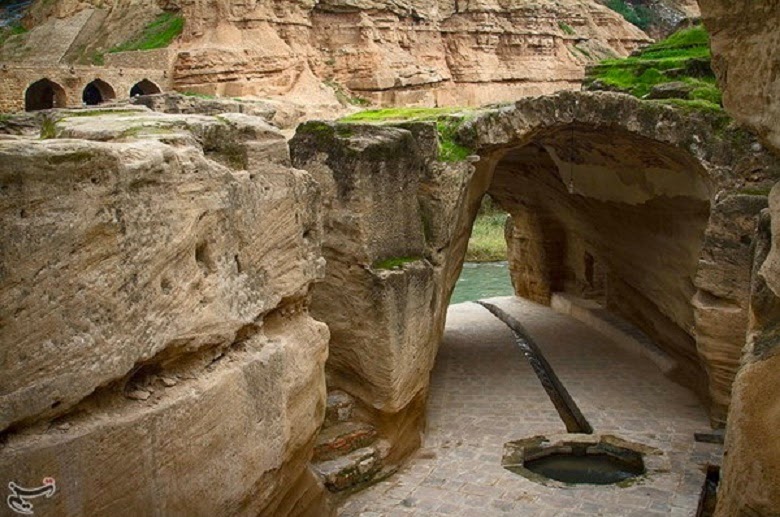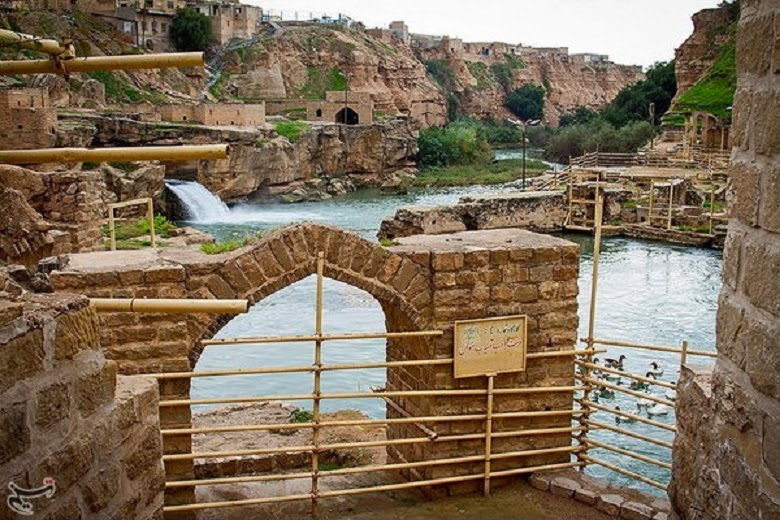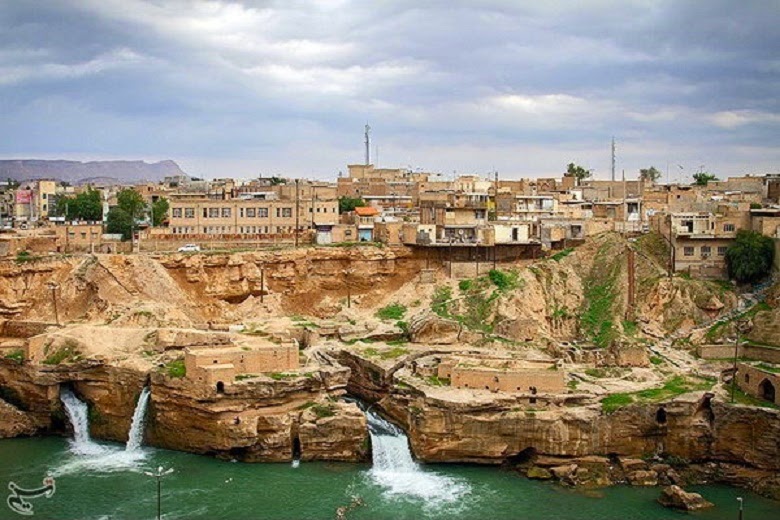







can be traced back to Darius the Great in the 5th century B.C. It involved the creation
of two main diversion canals on the river Kârun one of which, Gargar canal, is still
in use providing water to the city of Shushtar via a series of tunnels that supply
water to mills. It forms a spectacular cliff from which water cascades into a
downstream basin. It then enters the plain situated south of the city where it
has enabled the planting of orchards and farming over an area of 40,000 ha.
known as Mianâb (Paradise) [Credit: Mostafa Gholamnejad/
Tasnim News Agency]
The site dates back to the time of the Achaemenid king Darius the Great in the 5th century BCE. It involves two main diversion canals on the Karun River, one of which, Gargar canal, is still in use providing water to the city of Shushtar via a series of tunnels that supply water to mills.







operation centre of the entire hydraulic system, the tower where the water level is measured,
damns, bridges, basins and mills. It bears witness to the know-how of the Elamites and
Mesopotamians as well as more recent Nabatean expertise and Roman building
influence [Credit: Mostafa Gholamnejad/Tasnim News Agency]
The system forms a cliff from which water cascades into a downstream basin and enters south of the city enabling people in Shushtar to plant orchards and create farms over an area of 40,000 hectares.
Source: Iran Front Page [December 25, 2014]










